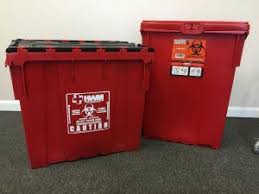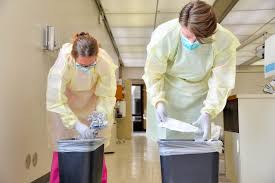MANAGING THE DENTAL WASTE
The growing medical community and multitudes of procedures as well as treatment has a downside in the form of mounting medical wastes which crucially need to be attended to prevent generation of hazardous toxins that are potentially lethal for humans and environment. Below are enlisted are few dental wastes and the respective methods of disposal.
Mercury Amalgam Waste
Amalgam is mixture of metals chemically bonded by mercury, a toxic element that can space in the aquatic environment through waste water, vapours or scrap, where some bacteria can transform it into methylmercury, a toxic form of mercury that can get deposited in fish and shellfish. Following measures should be kept in mind to manage amalgam waste:
- Usage of bulk mercury should be avoided.
- Disposable amalgam capsules should not be put in biohazard containers.
- Non-contact or contact amalgam waste should be discarded in biohazard containers, infectious waste containers (red bags), or regular garbage
- Devices containing amalgam should not be rinsed over drains or sinks.
- Extracted teeth that contain amalgam restorations should not be disposed in biohazard containers, infectious waste containers (red bags), sharps containers, or regular garbage.
- Amalgam waste should not be flushed down the drain or toilet.
- Bleach or chlorine-containing cleaners should not be flushed in wastewater lines.
Amalgam separators remove amalgam particles from the wastewater to minimise its quantity entering the sewage system, extract amalgam particles from dental office wastewater through sedimentation, filtration, centrifugation, or a blend of these mechanisms and using ion exchange technology to separate amalgam.
Silver-Containing Wastes
Silver can be found in various types of waste in a dental facility or practice. It is an additional element found in dental amalgam, providing this form of cavity filling a silver appearance. Silver can have adverse ecological impact, not to mention potential peril to marine species. So, silver must be properly recycled or disposed off in the following methods whenever it is included in the treatment.
- In-office silver recovery unit
One economical and easy alternative is to utilise an in-house silver recovery unit which extracts silver from fixer solutions. No sooner the silver has been removed, the cartridge can be recycled.
-
Use a recycling or drop-off service
Dental clinics and centres can also use an out of the house facility that supplies pickup and recycling services for fixer solutions that have been acquired from centres.
Lead-Containing Wastes
X-ray packets and lead aprons constitute lead foil which can percolate in the landfills and add toxins to soil and groundwater. The contamination of landfills can be harmful for both people and animals, therefore a licensed hazardous waste disposal company is required to manage the lead disposal.
The generated waste can be rid off with the aid of options given below:
- Use a hazardous waste company
A company that is licensed and specializes in taking care of hazardous waste can be hired to deal with the lead waste produced by dental facilities.
-
Send the lead to a recycling facility
Some recycling units can acquire lead from dental facilities and supply the material to places where it can be re-utilized in some other occupation.
Blood-Soaked Gauze
These bio-hazardous medical wastes can be lethal since these spread infections, a leak- and puncture-resistant red disposable plastic bag or a leak-proof reusable container with a universal biohazard label is recommended for the discard of such medical wastes.
Sharps
Needles, scalpel blades, anesthetic carpules and orthodontic wires are all examples of sharps found in dental treatments centres. Significantly, accidental punctures are often the consequence of sharp-related objects.
- Sharps must be discarded carefully in portable travel containers, vertical drop slot containers or horizontal drop slots and should never be thrown in general trash or recycling.
- Sharps containers to be puncture-resistant, with a lid which can be sealed to make it leak-proof, red in color, further labelled with a visible biohazard symbol.
- Dental practitioners should place sharps disposal containers in areas that are both easily visible and accessible. It shouldn't be put under sinks, in cabinets, on the back of doors or in any other area of the office where the foot traffic is high.
Chemicals, Disinfectants and Sterilizing Agents
The dental community uses a variety of chemicals for sterilizing, disinfecting and cleaning which may constitute active chemical ingredients (e.g. formaldehyde), that may be termed as hazardous. Excessive volume of such toxics can be explosive if released into the sewers in heavy concentration. The microbial process that breaks down wastes in sewage can be obstructed which may damage the drainage and sewer pipes over time. Management of such wastes is vital since these adversely affect our ecosystem and its inhabitants.
- Other alternatives which are less perilous can be employed.
- All these chemical solutions, which are classified as special wastes, should be stored in labelled, sealed and leak-proof containers in a secure location, to avoid an accidental spill or leak in any sanitary sewer, septic system or storm drain.
- An associated hazardous waste disposal vendor can be contracted for pick-up services for special wastes or flammable wastes.
- However, small quantities of cleaning solutions and disinfectants which are not classified as special wastes, may be discharged to sanitary sewers( but not in huge volumes).




